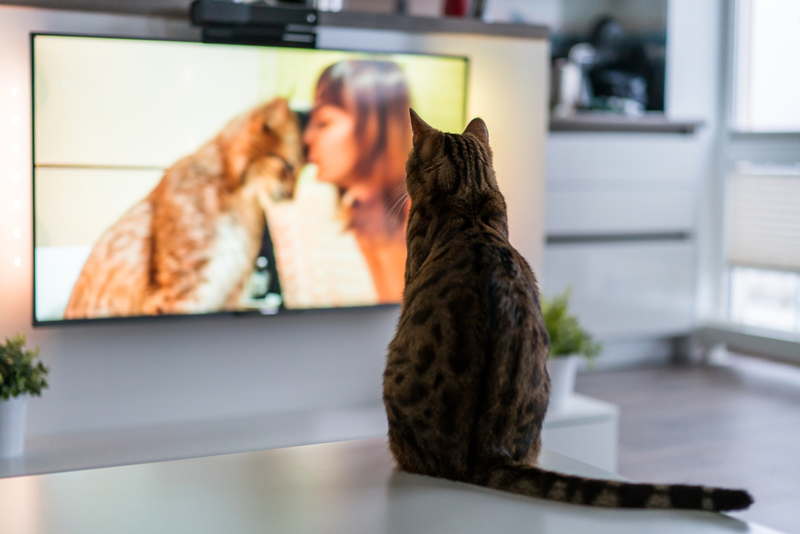
She’s certainly paying attention to what’s on the screen. Is this even conceivable? Do pets have the ability to watch and understand television? Let’s have a look.
To begin with, only a small percentage of pets will actually watch television. And for the majority of those who do, the experience is brief. For example, if your kitty reacts to a soccer match on TV, it is most likely aroused by the color of the ball and not the score. Dogs also enjoy watching now and then. Despite common belief, canines are not completely colorblind. In fact, they can see blues, yellows, and grayscale. You can even adjust the settings on your screen to accentuate those specific colors to make your dog’s experience more enjoyable!
Like some humans, pets like to sleep with white noise—the low-level, ambient sound of a TV, radio, or fan—to avoid the horrible sound of stillness, sirens from outside your home, or loud noises that can be disturbing while pet parents are away. Special content for a canine and feline senses of vision and hearing, for example, is generated to assist their natural activity patterns. Stress, separation anxiety, and other negative behavioral issues will be less likely in your furry companion.

Cats and dogs are sensitive to motion in general, so watching their own breed on TV excites them. On occasion, the screen will display butterflies or bubbles. This is due to the fact that our four-legged friends have excellent vision. They pay attention to every detail and find this visually stimulating.
Pets, unlike many humans, are better at self-control and managing themselves than some humans. They don’t have the same level of control over devices as we do, which makes a big difference in how much TV they get to watch. They are free to leave! This isn’t to say that watching TV can replace physical activity, but it is a terrific method to stimulate your pets when its a rainy day outside.